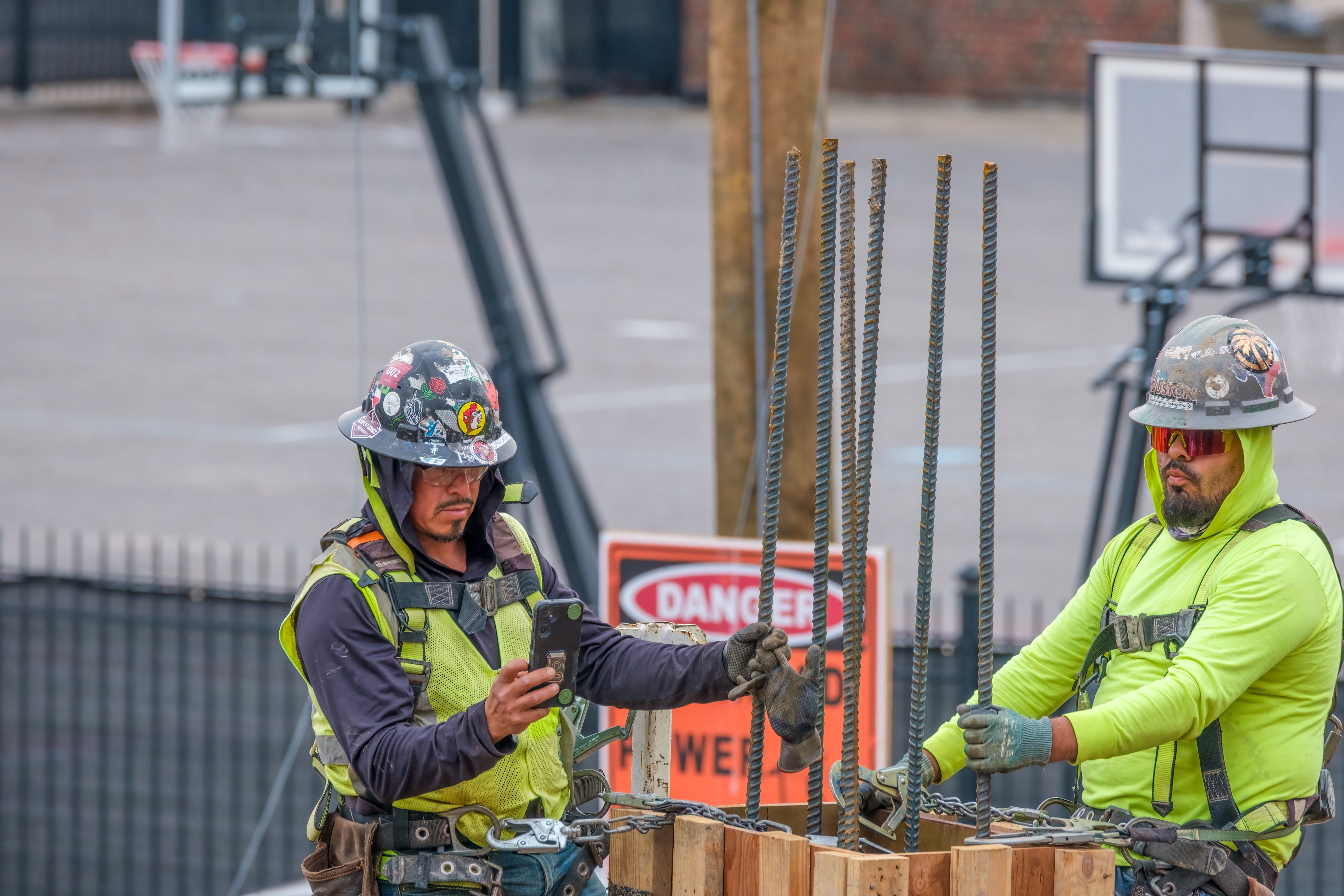KEY POINTS
-
Despite the visible risks to construction workers in road and highway work zones, a new survey reveals that motorists are nearly twice as likely to die in work zone crashes as the workers themselves.
-
The AGC and HCSS study found that 60% of contractors reported at least one crash in the past year, with over 70% resulting in injuries to vehicle occupants and nearly a quarter involving fatalities.
-
Industry leaders stress the need for stricter laws and better enforcement, as distracted driving, speeding, and poor awareness continue to endanger both road workers and the driving public.
Construction Workers Face Daily Risks in Highway Work Zones
Laborers, heavy equipment operators, and other professionals face plenty of danger while working in road and highway construction work zones.
However, new research has revealed that motorists are almost twice as likely to die in a work zone crash as construction workers.
New Study Highlights Greater Risk to Motorists
The study, conducted by the Associated General Contractors (AGC) of America and Heavy Construction Systems Specialists (HCSS), found that among respondents who reported experiencing a work zone crash, 30 percent resulted in injury to workers. In comparison, 71 percent reported experiencing a collision in which drivers or passengers were injured.
Calls for Stronger Safety Laws and Enforcement
Contractors say the new data highlights the need for stronger work zone safety laws and better enforcement.
AGC chief executive officer Jeffrey Shoaf noted that crashes involving a moving vehicle in highway work zones are all too common as motorists fail to slow down and pay attention to the rules.
Motorists Are Failing the People Who Keep Roads Safe
“Every day, tens of thousands of Americans work alongside our highways, often with little more between them and rushing traffic than an orange barrel,” he said. “These workers are counting on the traveling public to slow down and pay attention, but too often, the public is letting them down.”
The study was based on a nationwide survey of highway construction firms, which the association and HCSS conducted in April and May. More than 600 contractors participated.
Sixty percent of respondents reported at least one crash involving a moving vehicle at highway work zones in the past year. Nearly one-third of firms experienced five or more crashes during the past year. Thirteen percent of contractors reported construction workers were killed in work zone crashes, while 24 percent reported drivers or passengers were killed in those crashes. Sixty percent of respondents reported projects were delayed as a result.
Forty-seven percent of contractors reported that highway work zones are more dangerous than they were a year ago, while another 51 percent indicated the risks are the same as a year ago.
Twenty-eight percent indicated work zone crashes have affected their ability to hire and attract new workers to the industry.
However, Shoaf noted that 36 percent of contractors reported that the current penalties for moving violations in highway work zones are insufficient to deter unsafe driving behavior.
Another 39 percent indicated that while the penalties might be sufficient, enforcement is not.
Thirty-three percent of respondents reported that enforcement efforts, such as police presence or the use of speeding cameras, did not deter unsafe driving behaviors in work zones.
Industry Pushes for Policy Changes
Two-thirds of survey respondents declared they wanted states to pass stricter laws against cellphone usage and distracted driving in work zones, and 54 percent wanted automatic ticketing for speed violations in those zones. Fifty-two percent supported highway work zone cameras.
“Too few drivers see the need to slow down and pay attention in work zones because too few states have made work zone safety a priority,” Shoaf said.
Advocacy for National Action and Data Collection
The AGC is pushing Congress to require the National Highway Traffic Safety Administration to collect data on work zone crashes, including who is killed or injured in those crashes, and to require states to create plans to reduce the incidents. The organization is also working with its network of chapters to push for better enforcement and education measures at the state level.
Work zones are perilous environments where multiple groups face significant risks, according to personal injury attorney Wocl Leydon of Connecticut, who wrote a blog on the issue.
The attorneys said motorists represent a substantial portion of the casualties in work zone incidents.
In 2022, speeding was a contributing factor in 34 percent of fatal work zone crashes, up from 32 percent in 2021. Rear-end collisions accounted for 21 percent of fatal work zone crashes in 2022, slightly decreasing from 23 percent in the previous year.
“The vulnerability of commercial drivers, including other drivers operating large trucks, is particularly notable in work zone accidents,” the attorneys wrote. “These drivers often face additional challenges, such as navigating through narrow lanes and dealing with sudden changes in traffic patterns.
“The presence of heavy machinery and workers in close proximity further complicates the situation, as they must work closely with the evolving conditions.”
The attorneys stated motorists must be vigilant and responsive to changing road conditions and traffic signs to avoid accidents. Meanwhile, tailgating is a common issue in work zones.
The high percentage of pedestrian fatalities in work zones involving motor vehicles encroaching into road work areas highlights the need for strict adherence to traffic rules and speed limits, they wrote.
“By understanding the risks and taking proactive measures to stay alert, motorists can significantly reduce the likelihood of accidents and protect both themselves and others in their car.”
About ConstructConnect
At ConstructConnect, our software solutions provide the information that construction professionals need to start every project on a solid foundation. For more than 100 years, our keen insights and market intelligence have empowered commercial firms, building product manufacturers, trade contractors, and architects to make data-driven decisions, streamline preconstruction workflows, and maximize their productivity. Our newest offerings—including our comprehensive, AI-assisted software—help our clients find, bid on, and win more projects.
ConstructConnect operates as a business unit of Roper Technologies (Nasdaq: ROP), a constituent of the Nasdaq 100, S&P 500, and Fortune 1000.
For more information, visit constructconnect.com








